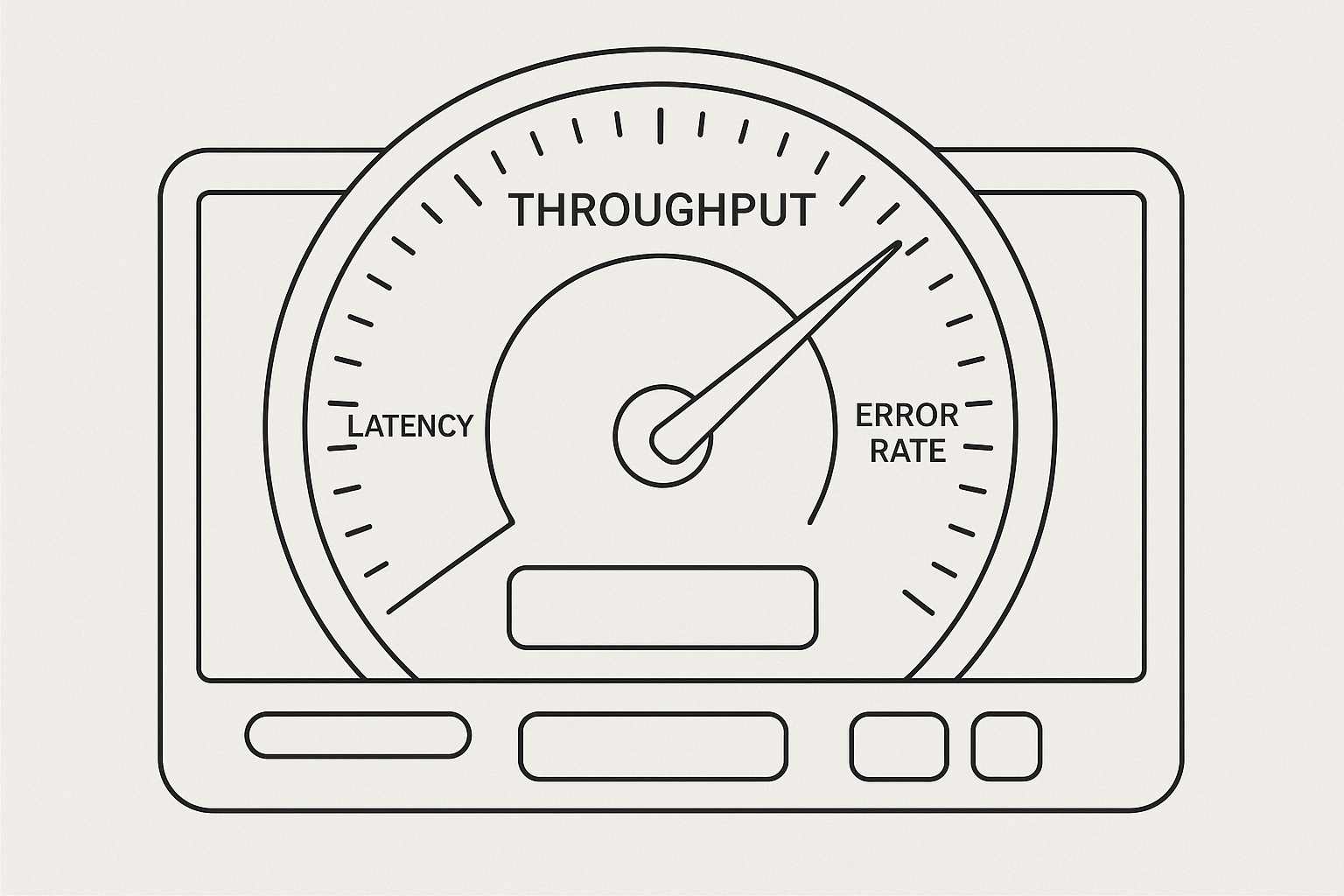In the fast-paced world of software development, understanding key performance metrics is crucial. Among these, throughput emerges as a pivotal component in performance testing. But what exactly is throughput, and why is it so vital? This article will delve into these questions, highlighting common challenges like accurately measuring throughput and optimizing system efficiency. Additionally, we’ll explore how integrating AI innovations can help overcome these hurdles, offering strategic insights and solutions.
- Understanding Throughput in Performance Testing
- Optimizing Throughput for Enhanced System Efficiency
- Common Challenges and Solutions in Throughput Testing
- Conclusion
- References
Understanding Throughput in Performance Testing
Throughput is a cornerstone concept in performance testing, referring to the amount of data or transactions a system processes over a specified period. It’s integral for gauging system performance, akin to a car’s speedometer showing how fast it’s going. By measuring throughput, you can determine a system’s capacity and identify potential areas for improvement in efficiency and cost management. For detailed insights on various performance testing types, consider reading our Comprehensive Guide on Performance Testing.
For additional guidance on the most critical performance metrics, explore our post on performance metrics that matter.

Defining Throughput and Its Importance
Throughput measures the rate at which a system handles requests, thus indicating its capacity and efficiency. Think of it as the volume of traffic a highway can manage at any given time—more vehicles mean higher throughput. A system’s throughput can significantly impact its operational cost and efficiency, making it a crucial metric for performance testing. Throughput helps in understanding system constraints and planning capacity accordingly, which is vital for sustainable growth.
How Throughput is Measured
Measuring throughput involves several methodologies and tools, each tailored to different system architectures and requirements. Typically, throughput is assessed using network testing tools that monitor data packets and transaction rates. Practical examples include using software metrics like transactions per second (TPS) or network throughput in Mbps. The process of planning and designing effective load tests can also provide essential structures for correctly measuring throughput.
Factors Affecting Throughput
Various factors can influence throughput, including network conditions, resource availability, and system architecture. For instance, suboptimal network configurations or limited server resources can bottleneck traffic, reducing throughput. Efficient architecture can enhance throughput, leading to significant performance gains. Explore our article on simulating real-world scenarios to better understand how different factors influence throughput effectively.
Optimizing Throughput for Enhanced System Efficiency
Optimizing throughput is crucial for improving system performance and ensuring that operations run smoothly, bringing tangible business benefits. Let’s explore some strategies.
Techniques for Improving Throughput
Improving throughput often involves technical solutions like deploying AI-driven tools to streamline data processing and enhance response times. Advanced analytics can predict and resolve potential slowdowns before they impact performance. Round The Clock Technologies provides an excellent resource on integrating AI in performance testing, which shows significant improvements in throughput optimization. For more insights into leveraging AI, check out our discussion on AI tools transforming performance testing.
Leveraging AI in Throughput Optimization
AI plays a transformative role in throughput optimization, offering predictive analytics, real-time adjustments, and comprehensive performance monitoring. AI and machine learning are reshaping performance testing by providing a predictive, self-healing ecosystem. These intelligent agents can dynamically adjust system parameters to maintain optimal throughput.

Common Challenges and Solutions in Throughput Testing
Despite its importance, throughput testing presents several challenges, often leading to bottlenecks and inefficiencies. Here’s how to tackle these problems.

Diagnosing Bottlenecks and Limiting Factors
Effective throughput testing requires identifying system bottlenecks. Diagnostic methods can include analyzing software workflow inefficiencies or hardware limitations. Articles elaborate on detailed bottleneck diagnostics, offering insights into optimizing these constraints.
Implementing Solutions for Performance Inefficiencies

To address performance inefficiencies, practical strategies need to be deployed. These can involve enhancing software configurations or upgrading system components. Insights emphasize the importance of strategic interventions in resolving inefficiencies and improving throughput.
Conclusion
Understanding and optimizing throughput is essential for robust performance testing. By integrating AI-driven solutions and mastering complex testing environments, organizations can enhance system efficiency and drive better business outcomes. For those seeking deeper insights and hands-on guidance, consider joining our upcoming webinars focusing on leveraging AI for performance optimization.
References
- “Understanding Software Testing: Throughput Concepts.” GeeksforGeeks. Retrieved from https://www.geeksforgeeks.org
- “Understanding Your Results: Measures and Metrics.” Tamos. Retrieved from https://www.tamos.com
- Cisco. (N.D.). “Resource Optimization: Improving Throughput.”
- Round The Clock Technologies. “The AI-Driven Evolution of Performance Testing.” Retrieved from https://rtctek.com
- IEEE. (N.D.). “Technical Standards and Insights on Throughput.”
- “Understanding System Bottlenecks.” Medium. Retrieved from https://medium.com
- Harvard Business School. “Case Studies on Inefficiency Resolution.” Retrieved from https://hbr.org






